The Grapevine Art & Soul Salon
Views and Reviews: Jonathan Knott
Thoughts and Thrills in Pan's Labyrinth
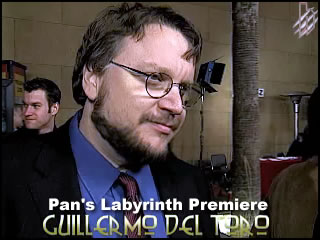
Director Gillermo del Toro (Hellboy, Blade II) showed quite a talent for high-powered action and magically violent “otherworlds” in his first two films, yet they both seemed as if they had more potential than was realized. Pan’s Labyrinth proves that del Toro does indeed have the drive and vision to go further and deeper to make his own indelible mark in cinematic art. While the film does not appear to have an underlying moral(much like his previous work), it feels more complete than his earlier efforts, so much so that it doesn’t seem to need much thematic structure.
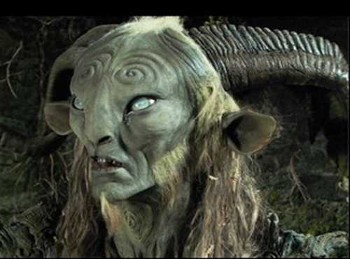
I tend to judge whether a film is powerful by its ability to cause physiological reactions in me while I’m watching (tears, hair standing on end, goosebumps).Pan’s Labyrinth is such a film. While some of those reactions can also be brought out by Disney films or horror films that follow a formula to hit those specific nerves in the audience, this one is the rare film that hits them all and is intellectually stimulating as well. It defies genre. Drama? Not nearly big enough to describe the film. Action/Adventure? Sure, but much more than that. Foreign language? Of course, but... Fantasy? Definitely, but there’s far too much brutal reality involved as well to leave it there. It just is what it is: eclectic, unique, breathtaking.
The movie takes place in the woods of central Spain near the end of the Spanish Civil War. A brutal Captain (Sergi Lopez) is stationed at a remote outpost, in charge of stamping out the last rebel resistance, in which he takes great satisfaction. He has brought along his pregnant new wife (Ariandna Gil) despite her delicate condition (her pregnancy is advanced), and her 12-year-old daughter Ofelia (Ivana Baquero), because he believes a man’s son should be born where his father is. (When the nervous camp doctor asks him how he can be so sure it’s a boy, the Captain looks at him and says, “No mi jota,” translated in the subtitle as "Don't f... with me.")
The mother is too weak both physically and emotionally to care for Ofelia, and the task falls on the Captain’s house servant, a kind young woman (Mariabel Virdu) who’s also a spy for the resistance.
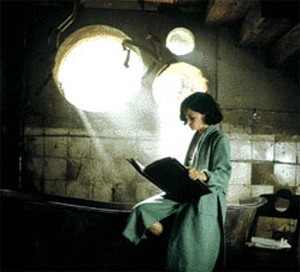
Ofelia is a precocious girl on the threshold of adolescence who’s obsessed with books and storytelling, and since her mother does little but lie in bed and moan, and her new father is cold to her when he’s not out brutalizing the peasantry, she spends her time exploring the huge old house and grounds.
Ofelia encounters some delightful fairies who lead her to an ancient labyrinth, underneath which is an old and somewhat pushy faun who believes that she is a princess escaped from the underworld and just now returning to her rightful place.

He gives her three tasks to perform in a specified period of time to make sure she’s not been unduly tainted by the human race. As Ofelia works to perform these tasks, her world becomes paralleled with the outside world; the movie moves back and forth between them.
Beware! Despite this story being ostensibly about a 12-year-old girl, fairies and fauns, it is not a children’s movie. The violence throughout inflicted by the sadistic Captain is about as cold and realistic as most viewers can handle, and more than some may want to. That’s part of what makes this movie so difficult to categorize--and also so powerful. There is a running parallel in the film showing how fascism can be as frightening as any imagined monster, yet this theme never feels overdone or preachy. The rebels are just as violent as the facists, and the few heroic acts, rather than coming across as flag-waving inspirations, are simply sad.
Visually, it is a hauntingly beautiful film. The special effects are superb, but understated; most of the beauty comes from the director’s eye for framing scenes and from the natural surroundings. The sound is so subtle and fine, I recommend that the film be watched on a premium surround system. Much of the magic is done with an eye for the basic art of old-fashioned storytelling, letting the girl and her mother huddle under the blankets while the huge fire in the fireplace combats the cold drafts, and the old house, which seems to have jumped right out of a dusty volume of Grimm's fairy tales, groans and moans in such a way as to become a character in itself. And this fairy tale will not help you sleep at night.
The cast is likewise excellent; the Captain is so believably frightening I wondered why I’d not seen him in horror films.
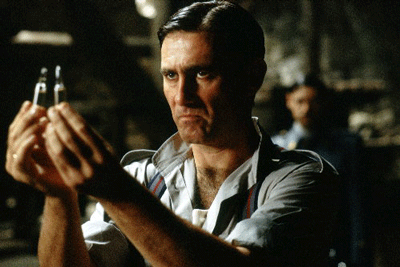
Turns out in Spain he’s familiar in soap operas and comedies; you’ll never believe that he is not experienced in portraying villainy. The sympathetic housekeeper was the female lead in Y Tu Mama Tambien (I didn't recognize her).

Ivana Baquero (Ofelia) is one of those child actors who seems to come from nowhere to do a superb job in a difficult role. Doug Jones (who plays the Faun and The Pale Man) is actually an American actor del Toro brought over from Hellboy, insisting he was the only one for the part, despite his not being able to speak Spanish (a noted Spanish opera singer dubbed over the voice; you can’t tell).
The true genius, however, is in the directing. Del Toro had total control over this film (which is much more than most directors get), and it shows. He says in the DVD introduction that he lost 45 pounds while making this film and that the process almost killed him.
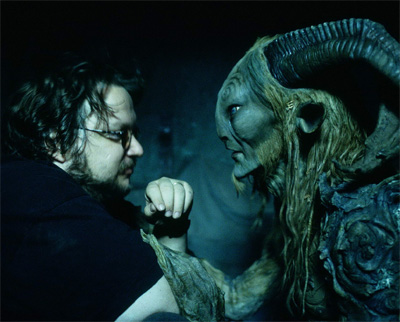
The result is a work of art that is visually stunning and powerfully rendered. It blurs the line between fantasy and reality to the point that stunned viewers are unsure of what they have just witnessed, though whatever it was left them in a teary-eyed state of indescribable satisfaction.